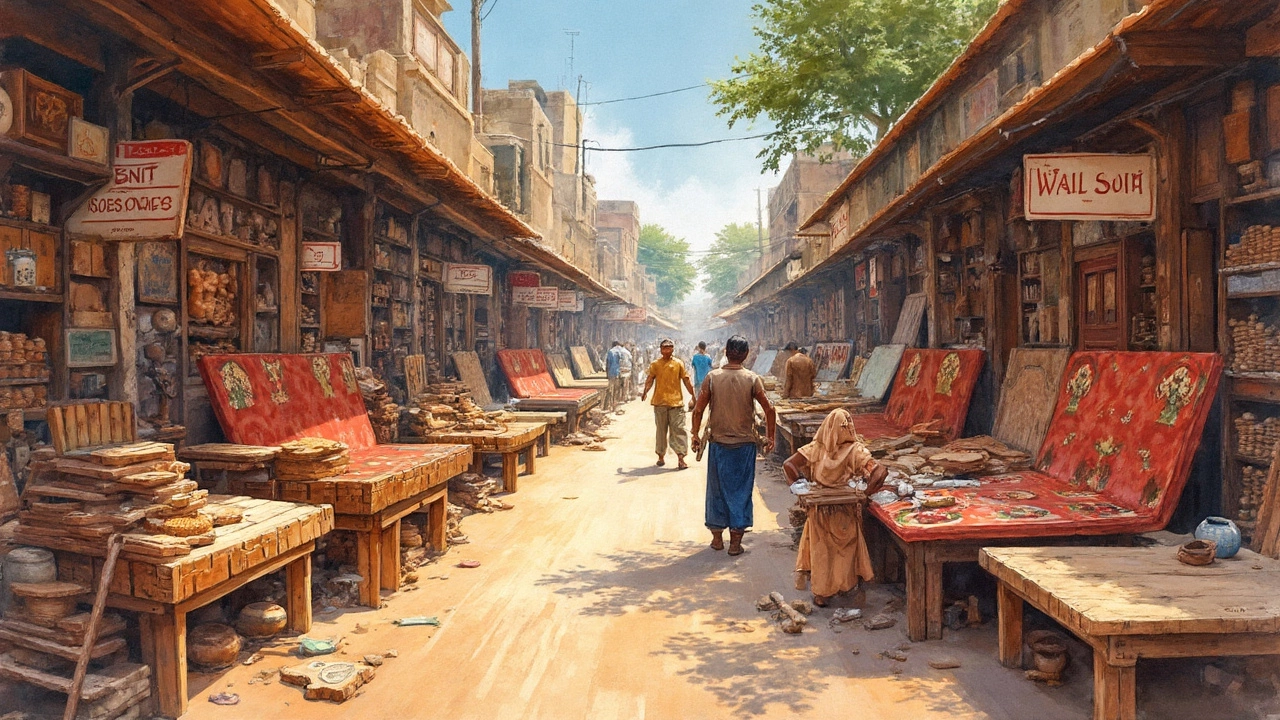Sofa Material India: Choose the Best Fabric, Wood or Leather for Your Home
Buying a sofa in India can feel overwhelming. There are countless fabrics, woods and leathers, each with its own feel and price. The good news? You don’t need to be an interior designer to pick a material that looks great, lasts long and fits your budget.
Popular Fabric Choices and What They Mean for You
Fabric sofas dominate Indian markets because they’re versatile and affordable. Here are the three most common types you’ll see in stores:
- Velvet: Soft, plush and perfect for a luxurious vibe. It hides minor stains but needs regular brushing to avoid crushing the pile.
- Microfiber: A synthetic blend that mimics leather’s sleek look. It’s water‑resistant, easy to wipe clean, and ideal for families with kids or pets.
- Cotton blend: Breathable and comfortable, especially in hot climates. It can wrinkle and may need occasional steaming, but it’s easy on the wallet.
When you choose a fabric, think about how often the sofa will see traffic. High‑use areas benefit from microfiber or tightly woven cotton blends, while a statement piece in a low‑traffic corner can afford the elegance of velvet.
Wood Frames: Which Species Stand Up to Indian Conditions?
The frame is the sofa’s backbone. In India, three woods are most popular:
- Sheesham (Indian rosewood): Strong, insect‑resistant and has a warm amber tone. It handles humidity well, making it a safe bet for coastal cities.
- Teak: Extremely durable and naturally oil‑rich, which helps it resist water damage. It’s pricier but worth it for a sofa you plan to keep for decades.
- Engineered wood (MDF/Particleboard): Budget‑friendly and often used with a solid wood surface layer. It can warp in high moisture, so avoid it in damp rooms.
If you live in a place with big temperature swings, pick a solid wood frame or one with a protective lacquer. It will expand and contract less, keeping bolts and joints tight.
Leather vs. Leather‑Look: The Real Difference
Real leather looks timeless, smells great and develops a patina that many people love. However, it requires regular conditioning and can crack if exposed to direct sunlight for long periods. Leather‑look upholstery—usually PU or synthetic leather—offers a similar aesthetic at a lower cost and is easier to clean. It’s a good choice for busy households, but it won’t age the same way genuine leather does.
Here’s a quick rule of thumb: If you’re willing to invest time in maintenance and want a sofa that gets better with age, go real leather. If you need something low‑maintenance and budget‑friendly, choose leather‑look.
Practical Tips to Keep Your Sofa Looking Fresh
1. Rotate cushions weekly. This prevents one side from sagging and spreads wear evenly.
2. Use a fabric protector spray. It adds a barrier against spills, especially for cotton or linen.
3. Keep sunlight out. UV rays fade colors and weaken wood. Add curtains or a slipcover if the sofa sits near a large window.
4. Clean spills immediately. Blot—don’t rub—so the stain doesn’t set.
5. Check the warranty. A good warranty signals that the manufacturer trusts the material’s durability.
Choosing the right sofa material in India doesn’t have to be a gamble. Match the fabric to your lifestyle, pick a solid wood frame for longevity, and decide between real leather or a synthetic look based on how much upkeep you’re ready for. Follow these simple tips, and your sofa will stay comfortable and stylish for years to come.

Best Wood for Sofas in India: A Practical Guide
Selecting the right wood for a sofa in India isn't just about aesthetics; it's about durability, cost, and longevity too. From the rich, sturdy teak to the budget-friendly neem, each type of wood brings different benefits to the table. Knowing your options and the properties of each wood can significantly influence the overall experience with your sofa. Consider the functionality and comfort aspects to make an informed choice that suits your lifestyle and budget.
